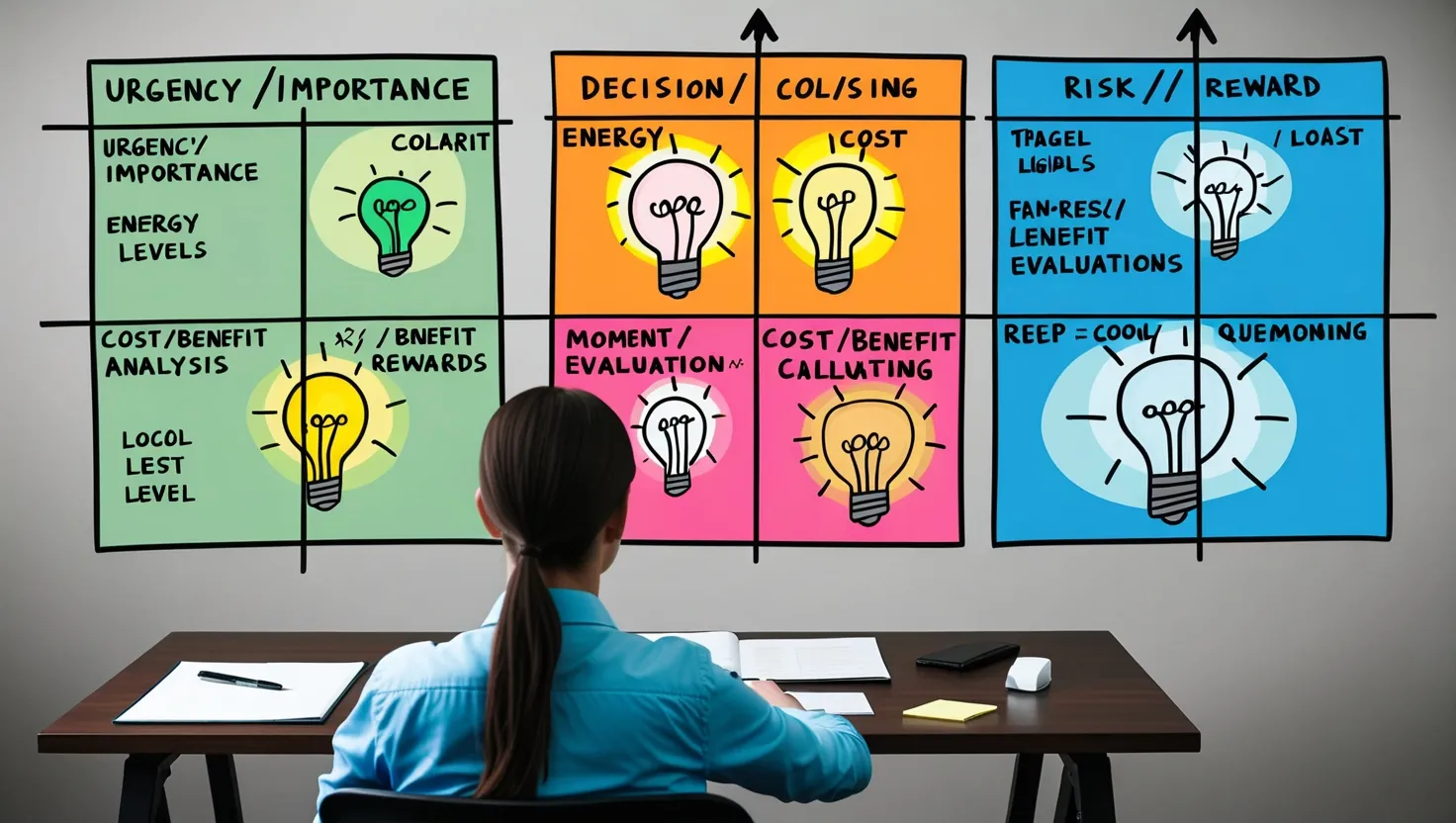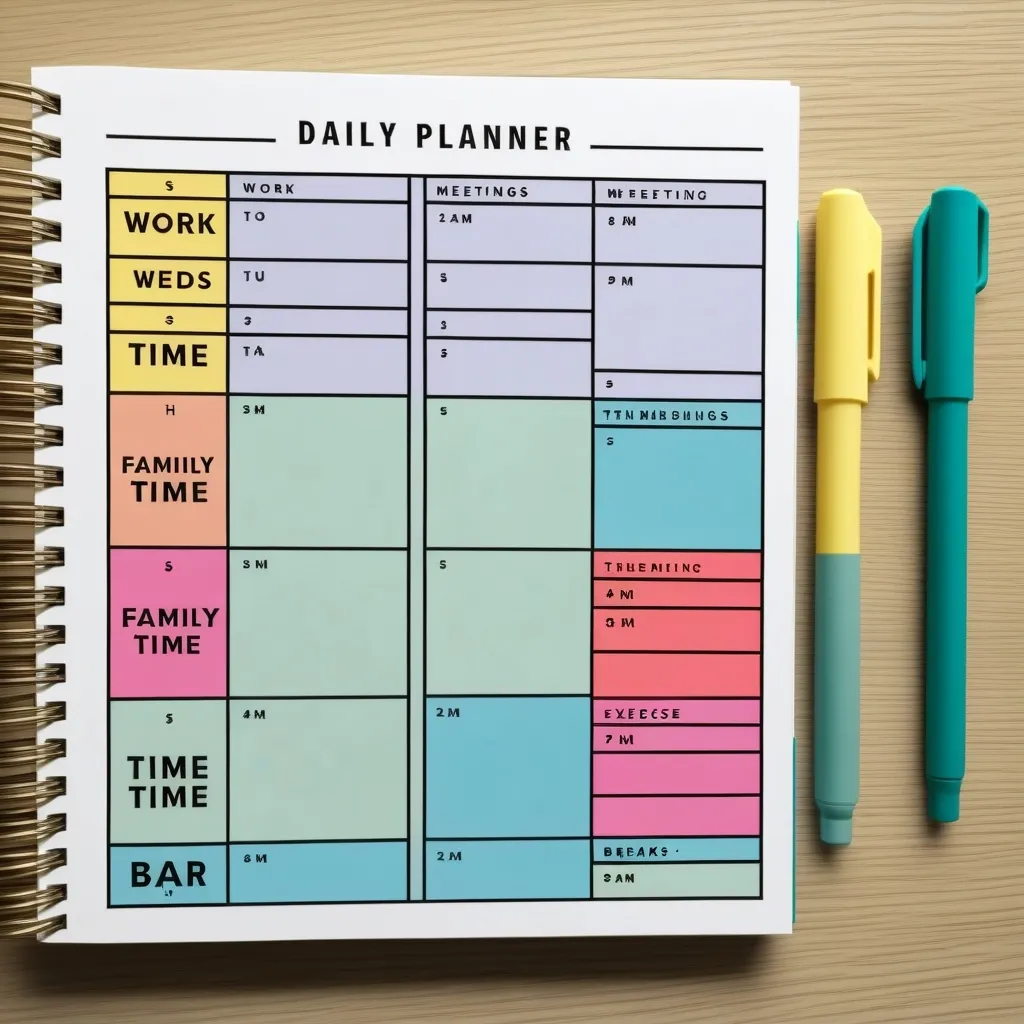As a productivity enthusiast, I’ve always been fascinated by the power of decision matrices to cut through the noise and help us make smarter choices. These simple yet effective tools can transform how we approach our work and personal lives. Let’s explore nine decision matrices that can revolutionize your productivity.
The Eisenhower Matrix is a classic for a reason. It’s elegantly simple, dividing tasks into four quadrants based on urgency and importance. I’ve found it incredibly useful for taming an overwhelming to-do list. By focusing on the important and urgent tasks first, I can ensure I’m tackling the most critical items. Scheduling important but non-urgent tasks helps me stay proactive, while delegating or eliminating less critical items frees up valuable mental space.
“The art of being wise is knowing what to overlook.” - William James
This quote reminds me that sometimes, the most productive thing we can do is choose not to do something. The Eisenhower Matrix helps make those decisions clearer.
But what about aligning our tasks with our natural energy levels? That’s where the Energy-Task Alignment matrix comes in handy. I’ve noticed that my creativity peaks in the morning, while my analytical skills are sharper in the afternoon. By mapping my tasks against my energy levels, I can schedule my day for maximum efficiency. Have you ever noticed patterns in your own energy levels throughout the day?
The Cost-Benefit Analysis matrix is another game-changer. It’s easy to get caught up in busy work that doesn’t actually move the needle. By evaluating tasks based on their potential value versus the required effort, I can prioritize high-impact activities. It’s been eye-opening to realize how many low-value, high-effort tasks I was wasting time on before adopting this approach.
“The price of anything is the amount of life you exchange for it.” - Henry David Thoreau
Thoreau’s words ring true when we consider the opportunity cost of our choices. The Cost-Benefit Analysis helps us make those exchanges wisely.
The Skill-Interest Grid is particularly useful for career planning and project selection. By plotting activities based on my skill level and interest, I can identify areas where I’m likely to excel and enjoy my work. It’s also helped me recognize when it’s time to delegate or outsource tasks that fall into the low-skill, low-interest quadrant.
Have you ever made a decision you later regretted? The Regret Minimization Framework aims to prevent just that. By comparing short-term discomfort against potential long-term regret, I’ve found myself making choices that align better with my values and long-term goals. It’s not always easy to choose the path of short-term difficulty, but the framework helps me stay focused on what truly matters.
The Impact Assessment matrix has been invaluable in my professional life. By evaluating tasks based on their impact on different stakeholders, I can ensure I’m focusing on activities that create the most value. It’s easy to get caught up in tasks that seem important but actually have limited impact. This matrix helps cut through that illusion.
Time is our most precious resource, and the Time-Value Chart helps me invest it wisely. By plotting activities based on the time investment required and the lasting value they create, I can prioritize tasks that have enduring impact. It’s been a powerful tool for avoiding the trap of constantly putting out fires without making progress on long-term goals.
“Time is the coin of your life. It is the only coin you have, and only you can determine how it will be spent.” - Carl Sandburg
Sandburg’s words underscore the importance of intentional time management. The Time-Value Chart helps us spend our time “coins” on what truly matters.
Risk and reward often go hand in hand, but not all risks are worth taking. The Risk-Reward Evaluation matrix helps me assess projects more objectively. By weighing potential rewards against possible risks, I can identify opportunities that offer the best balance. It’s been particularly useful in making investment decisions and choosing which new initiatives to pursue.
Lastly, the Delegation Decision Tree has transformed how I approach teamwork. By creating a matrix based on task importance and my unique contribution, I can make smarter decisions about what to delegate. It’s helped me focus on tasks where I can add the most value while empowering my team members to grow and take on new responsibilities.
These nine decision matrices have become indispensable tools in my productivity toolkit. They’ve helped me make clearer, more intentional choices about how I spend my time and energy. But remember, the true power of these tools lies not just in using them, but in reflecting on the insights they provide.
“The unexamined life is not worth living.” - Socrates
Socrates’ famous words remind us of the importance of self-reflection. These decision matrices offer a structured way to examine our choices and priorities.
As you explore these matrices, consider how they might apply to your own life and work. Which ones resonate most with you? How might they change your approach to decision-making?
Remember, productivity isn’t just about doing more—it’s about doing what matters most. These decision matrices are powerful allies in that quest, helping us navigate the complex landscape of modern life with greater clarity and purpose.
So, why not give one of these matrices a try today? You might be surprised at the insights you gain and the positive changes it sparks in your productivity journey.






